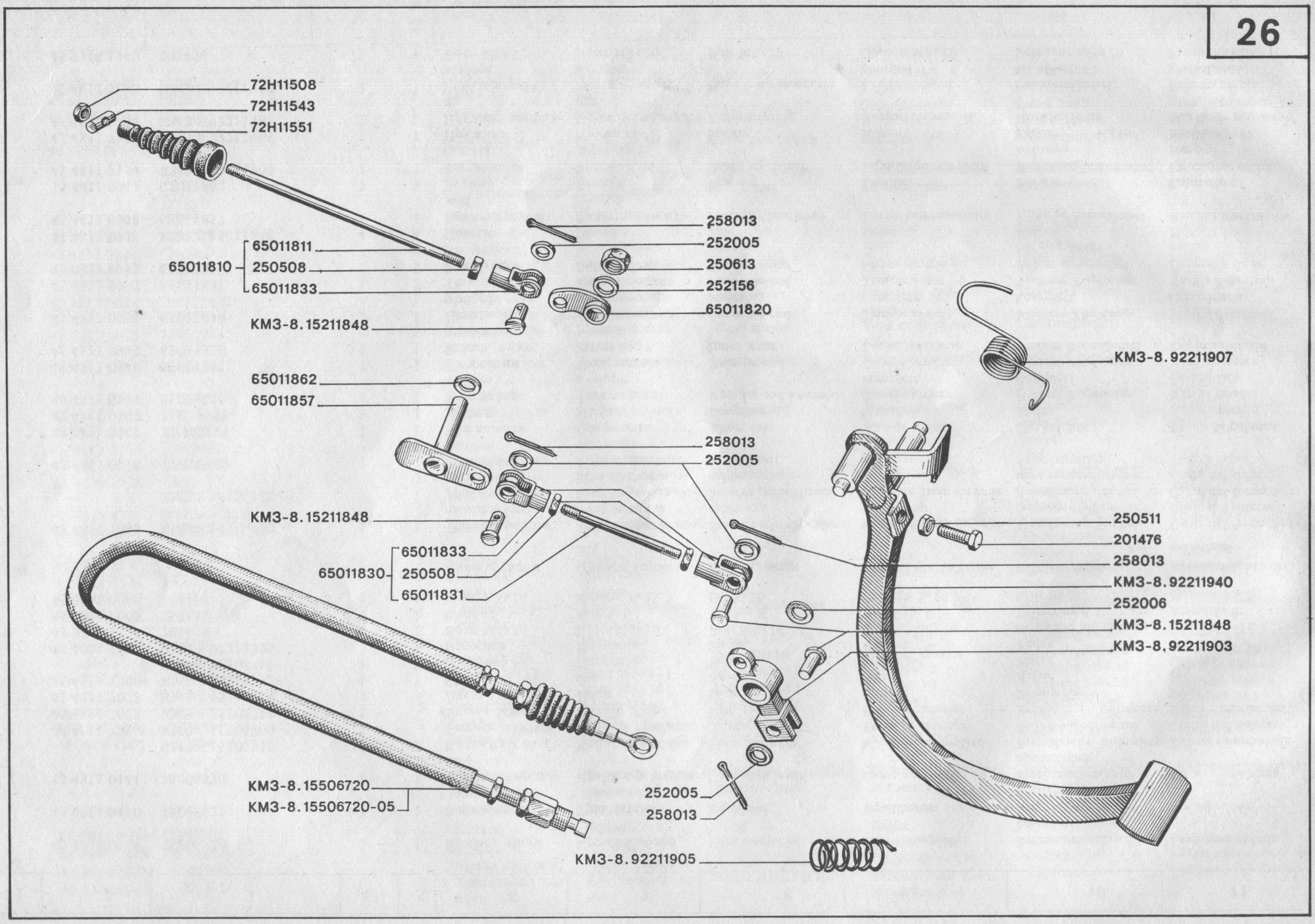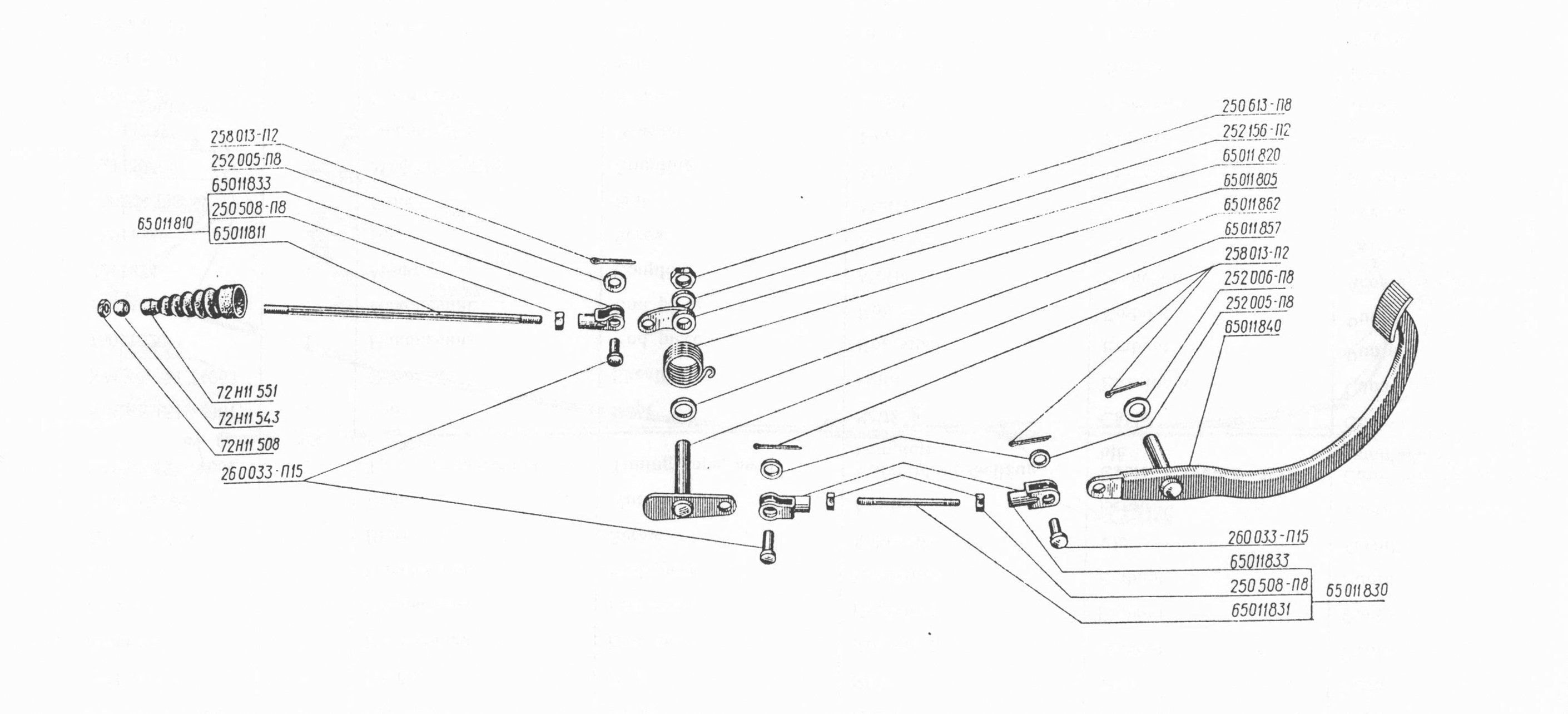Mechanical engineering advice requested
Posted: 2018-11-12 06:30am
I'm thinking in the future of slightly altering the rear brakes on the Russian bike. Just a little bit. [/lie]
At the moment, the rear wheel and sidecar wheel are two entirely separate brake systems.
The rear (bike) brake is a traditional drum--lever and rod operated from a foot control.
The sidecar wheel brake is a drum operated by a control cable from a parking brake lever. It is only used for parking.
This leads to neither brake being as strong as they could be, and the bike will naturally try to turn when either brake is operated.
What I'm proposing is to link these two systems together into one, so either control will operate both brakes simulataneously. See the picture:

So each brake lever is attached to a pulley. Around these pulleys runs a control cable. When either pulley is, well, pulled, it pulls the control cable, which then naturally pulls on the brakes at each end.
(You ever notice how if you say a word often enough, it starts to look weird?)
What I'm looking for here is someone to poke at this and tell me the problems. It looks good to me, but at the moment its a spherical vacuum with frictionless cows.
Details
* The force being applied to each brake SHOULD naturally be equal, translating to equal braking. If it's not equal, or it is and for some reason I need it to be not equal, I'm not sure about how to adjust individual brakes.
One idea I had was a friction clamp on the cable at that side, increasing the resistance to force, but that works both ways (resisting the brake returning), and I think the resistance would tend to alter with use. Another idea is a spring, increasing the resistance on that side--it would actually help to return the brake, and the resistance can be tuned by pre-tensioning.
* I want to be able to disconnect the sidecar and ride just the bike, and so the new brake would have to be able to deal with that. I'm thinking the control cable is actually two cables hooked together, and when unhooked the loose end is attached to a spring to simulate the missing sidecar brake.
* The control cable would be in a sheaf around the pulleys, and the whole sheaf is being pulled. I don't know if that would cause undue wear to the cable.
OK. Questions? Problems?
At the moment, the rear wheel and sidecar wheel are two entirely separate brake systems.
The rear (bike) brake is a traditional drum--lever and rod operated from a foot control.
The sidecar wheel brake is a drum operated by a control cable from a parking brake lever. It is only used for parking.
This leads to neither brake being as strong as they could be, and the bike will naturally try to turn when either brake is operated.
What I'm proposing is to link these two systems together into one, so either control will operate both brakes simulataneously. See the picture:

So each brake lever is attached to a pulley. Around these pulleys runs a control cable. When either pulley is, well, pulled, it pulls the control cable, which then naturally pulls on the brakes at each end.
(You ever notice how if you say a word often enough, it starts to look weird?)
What I'm looking for here is someone to poke at this and tell me the problems. It looks good to me, but at the moment its a spherical vacuum with frictionless cows.
Details
* The force being applied to each brake SHOULD naturally be equal, translating to equal braking. If it's not equal, or it is and for some reason I need it to be not equal, I'm not sure about how to adjust individual brakes.
One idea I had was a friction clamp on the cable at that side, increasing the resistance to force, but that works both ways (resisting the brake returning), and I think the resistance would tend to alter with use. Another idea is a spring, increasing the resistance on that side--it would actually help to return the brake, and the resistance can be tuned by pre-tensioning.
* I want to be able to disconnect the sidecar and ride just the bike, and so the new brake would have to be able to deal with that. I'm thinking the control cable is actually two cables hooked together, and when unhooked the loose end is attached to a spring to simulate the missing sidecar brake.
* The control cable would be in a sheaf around the pulleys, and the whole sheaf is being pulled. I don't know if that would cause undue wear to the cable.
OK. Questions? Problems?



